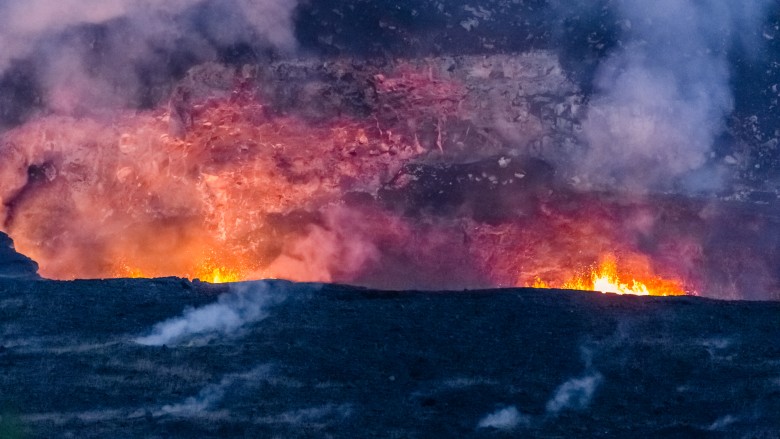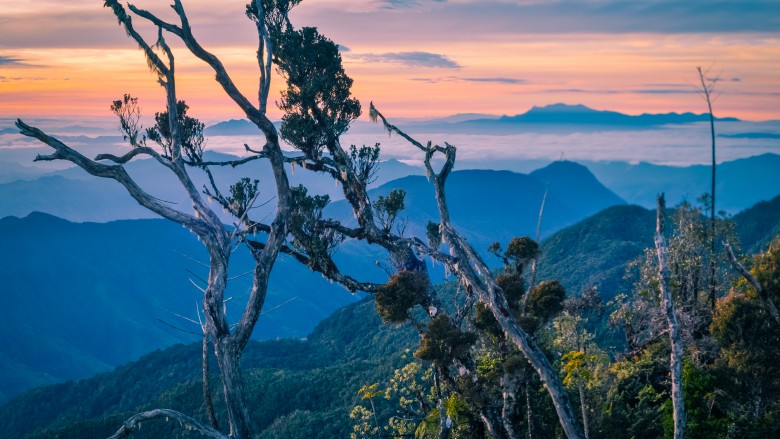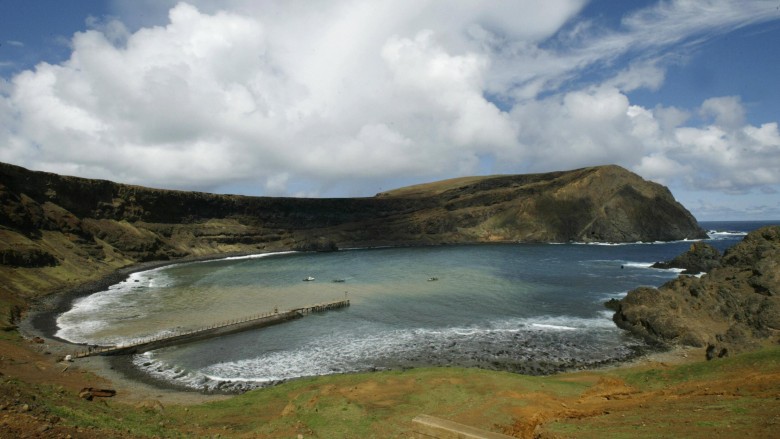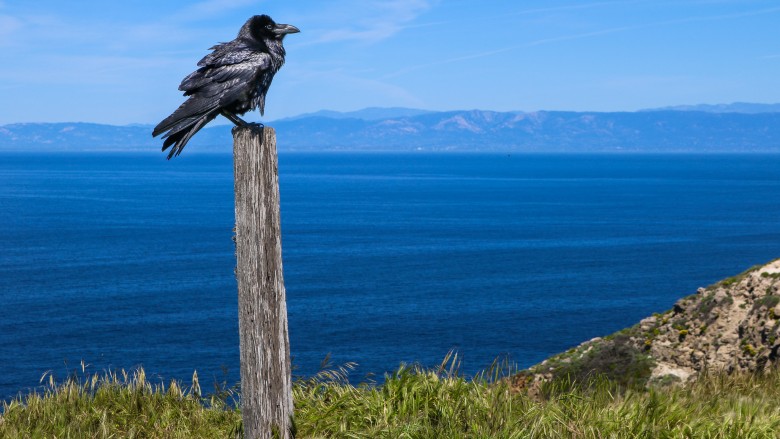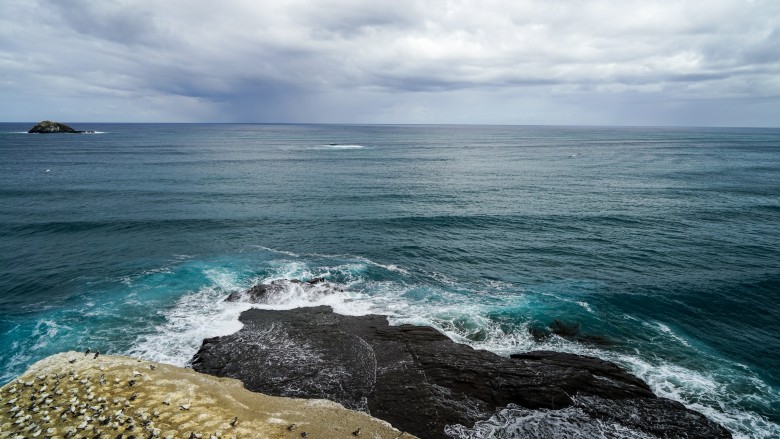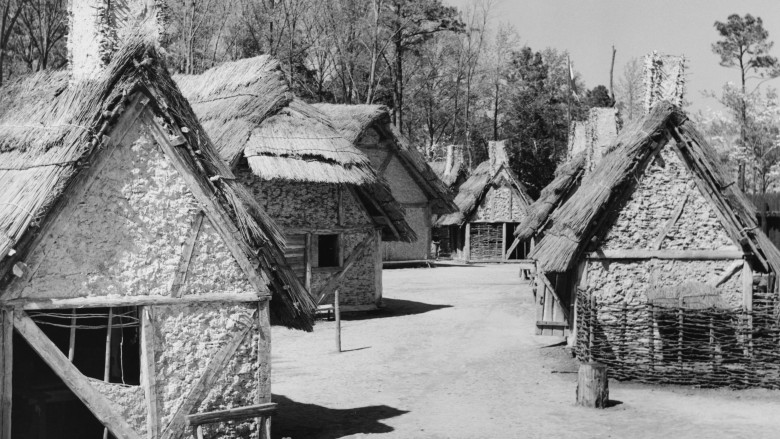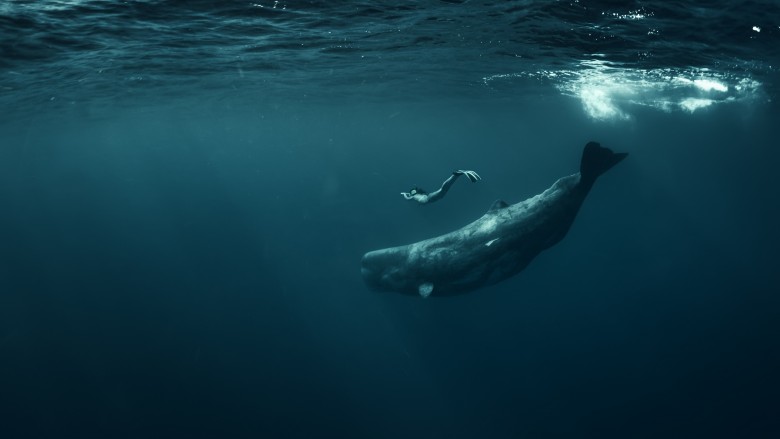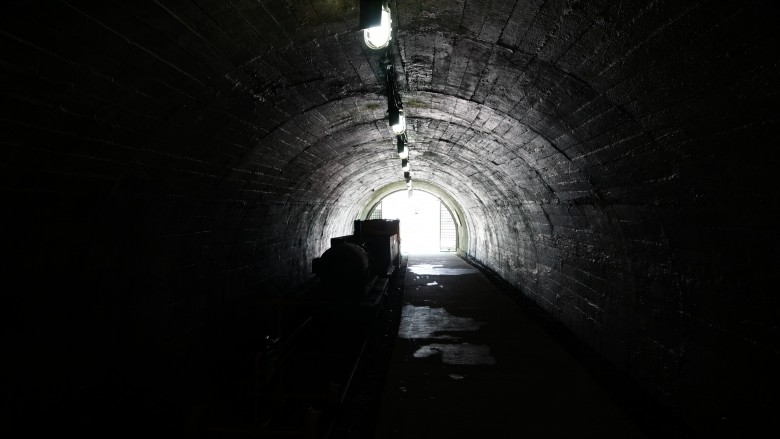The Most Intense Tales Of Survival Ever
Quick, what's the worst thing that's ever happened to you? We're betting that as traumatic as it was, it wasn't nearly as bad as what these people first faced, and then survived. Will this make you feel better, or worse? We're not sure, we just know that we're in awe of the strength of the human spirit. Warning: These tales of survival are seriously intense.
Douglas Mawson
If you've never heard of Douglas Mawson, there's no excuse for that, because he's awesome. He's often overshadowed by other Antarctic explorers like Robert Scott, which is weird, because Mawson survived to tell his story.
Mawson declined Scott's offer to join his team, and after raising millions in funding, he set off on his own expedition in 1912. A few months after landing, he decided he and two others—Lieutenant Belgrave Ninnis and Xavier Mertz—were going to go survey some glaciers a few hundred miles inland. They set off in 50–200 mph winds and temperatures were way, way below freezing on November 10, and they made 300 miles in the first month. But temperatures were rising, the ice and snow they were walking on was melting, and it was Ninnis who was the first to disappear down a crevasse along with the sled carrying most of their food, gear, and tents.
Mawson and Mertz were left with a few sleeping bags and enough food to last a week and a half. They headed back, but within a few days, Mawson was treating his snowblindness with cocaine and zinc. They'd killed—and eaten—most of their dogs and were pulling the sled themselves. The freezing cold was stripping skin from Mertz's legs, delirium and diarrhea were setting in, and Mertz succumbed to exposure. With 100 miles left, Mawson continued, documenting feet that were nothing but raw blisters and limbs so frozen he couldn't feel the skin coming off. But at a pace of five miles a day, he pressed on. Falling down a crevasse once, he managed to make it to a supply cache that held the first non-white thing he'd seen in weeks. He made it back to the shore on February 8 ... just in time to see his ship sailing away.
A party had stayed behind, and they spent another winter in Antarctica, finally returning to his native Australia in February 1914. We hope he tracked down the captain of that ship and gave him a stern talking-to.
Michael Benson, Chris Duddy, and Craig Hosking
On November 21, 1992, a helicopter carrying film technician Chris Duddy, camera operator Michael Benson, and pilot Craig Hosking crashed into a crater on the Kilauea Volcano. All three escaped the crash uninjured, only to find that they were inside the volcano and only feet from bubbling lava.
Their continued survival was something of a fluke that absolutely should not have been possible. When the helicopter crashed (it had lost power), it had somehow dumped them in a pocket of fresh air that wafted down from above. Surrounded by poisonous gases, they were left to die ... or do something about it.
Hosking returned to the helicopter to radio for help and summoned another chopper that was able to get low enough to let him climb aboard. Unable to see the others through the clouds of volcanic gas, they left. The next day, Duddy decided to climb out, in spite of the state of the volcano's crumbling inner walls. He made it, only a few hours after he started climbing. Benson stayed and waited for help, thinking the others were dead and resorting to prayers—and saying the alphabet backward—to hold on to his sanity. Eruptions were frequent, and it was two days before another chopper could get close enough to lower a net into the volcano fog close to where they knew he was, finally dragging him to safety.
Benson later said that while he was there, he even imagined he came face-to-face with the goddess Pele. "I told her that she was not going to take me," he said. "I got up and screamed that at her." Because why not, right? You might get points for sheer chutzpah.
Captain James Riley
James Riley was the captain of the Commerce, and in 1815, the ship wrecked on the coast of Morocco. Starving and running out of water, Riley and his crew offered themselves to a group of Berber tribesmen, surrendering themselves to slavery for a chance at survival. Eventually, Riley convinced a trader to buy them and escort them to safety, where he knew they'd be rescued by a sizeable ransom, and by 1817, Riley was safe.
The entire ordeal was turned into a novel by one of Riley's friends, and even though it was based on the journals and logs Riley kept, it's one of those stories that sort of blurs the line between truth and an awesome epic.
That's not to say the truth wasn't terrifying, though. The sailors-turned-slaves were sent on brutal forced marches across the desert, with little food and water ... and fewer clothes, since those were confiscated right away. According to Riley, he dropped from 240 pounds to 120, and one of his men weighed only 40 pounds by the time they reached safety. One, suffering from dysentery, was treated with a desert remedy: branding with the blade of a hot knife. Another was so hungry and so delirious from the heat that he started to eat his own arm, and if that's not the stuff of a horror movie, we don't know what is.
Ada Blackjack
In 1921, Ada Blackjack became an incredibly unlikely member of an Arctic expedition. Unmarried and with a chronically ill son to provide for, she was afraid of guns, never hunted, and had never even been outside of Nome, Alaska. She joined the Wrangel Island Expedition as a seamstress—with her sights set on finding a husband—and got far more than she signed on for when starvation and the cold started to take the lives of the men she had joined.
Once their camp was set up, they settled in for what seemed to be an easy wait for reinforcements. There was so much game that they stopped hunting it all, and apparently, they had never heard that fable about failing to prepare for winter months. By the time their food had moved on to warmer pastures, winter was there and so were starvation and scurvy. Bad ice kept reinforcements away, and Blackjack was soon left at a base camp to care for one man too ill to travel, while the others went for help. After her charge died, she was left to learn how to shoot, hunt, and survive, even scaring away polar bears that circled like vultures.
While she fought to survive, a rescue mission was mounted. Blackjack was rescued and had been keeping a journal, but if you've never heard her story, there's a good reason for that. Her rescuers thought the story was too scandalous to publish as she told it and destroyed most of the source material. Exactly what happened to her on that island remains unclear, but we do know that she returned to her son, no thanks to those critics.
Harrison Okene
Which is worse: facing horrible circumstances while you're able to take an active role in determining whether you live or die, or being forced to just sit and wait ... and wait, and, presumably, do some serious soul-searching, some praying, and making no small amount of promises to whatever deity you choose?
Harrison Okene was faced with the latter when his ship, the Jascon 4, capsized about 20 miles off the Nigerian coast in 2013. At the time, most of his shipmates were locked in their quarters (a protective measure against piracy), but his freedom meant he found his way into the engineer's office, where a pocket of air saved his life. Armed with only a plank, he listened as animals fought over his colleague's corpses. On the surface, rescue workers found 10 bodies, and when divers were sent to investigate the wreck, Okene heard them. Grabbing a hammer, he pounded on the ship's walls to get their attention, diving under the water and swimming through the flooded ship to get as close as he could, before returning to his air pocket.
Okene was rescued, convinced that he had only spent about 12 hours in the bowels of the sunken ship. It was actually more than two whole damn days, so long that he needed to spend time in a decompression chamber before he was out of the woods. He technically hadn't had enough air to breathe and stay alive—at least, if he'd been near the surface. Because of the insane pressure, the air pocket was condensed enough to give him around 60 hours of air.
What means he was rescued just in time. That's fine in the movies, but not nearly as cool when it happens to you in real life.
Shinji Mikamo
Shinji Mikamo was 19 years old when the US dropped an atomic bomb on him. He had been clearing out his Hiroshima house (that was slated to be demolished to form a firebreak) when "suddenly, I was facing a gigantic fireball. It was at least five times bigger and 10 times brighter than the Sun. It was hurtling directly toward me, a powerful flame that was a remarkable pale yellow, almost the color of white." Then there was the noise, and the pain. He was buried beneath the rubble of the house, and when his father pulled him out, half of his body had been burned. "My skin hung off my body in pieces like ragged clothes," he would remember. The yellow flesh underneath reminded him of the color of a popular cake.
They had been less than a mile from the epicenter. The two headed out of the city on foot, walking through a nuclear landscape filled with fires twisted into tornados by the winds. The dead were everywhere, and he remembered walking past—and sometimes over—the dead and wounded alike. "Slowly, with my heart breaking into countless pieces, I stumbled forward. I did my best to follow exactly in my father's footsteps, hoping and believing he would know the path to save us both."
Five days later, only Shinji was admitted to a hospital, and his father left to watch as he was carried away. When he was finally released, he went looking for his father, returning to the site of the blast and finding his father's treasured pocket watch—ruined, and marking the time of the blast. He never found his father, but he never blamed America, either. "Americans are not to blame, the war is to blame. People's unwillingness to understand those with different values—that's to blame."
Juliane Koepcke
Ask anyone who's afraid of flying what their biggest fear is, and it probably involves something like being in a plane crash, but how about being the only one to survive a crash that goes down in the rain forests of Peru? That's what happened to 17-year-old Juliane Koepcke. She and her mother were heading home for Christmas in 1971 when a storm took down her plane, killing 91 of the 92 passengers, including her mother. When the lightning hit the plane and it started to break up in midair, she had enough time to register her mother saying, "Now it's over," before she blacked out.
Koepcke says she doesn't remember much about falling, that it happened in a blur. She blacked out again, and when she woke up the next morning, she found herself on the forest floor, still strapped into her seat. Suffering from shock, a concussion, and burst capillaries in her eyes—with the loss of her glasses making things even more difficult—she spent a day recovering enough to walk and another day searching for her mother. She found no one and decided she needed to leave if she was going to survive.
She came across some other passengers, once, still strapped into their seats. She saw rescue planes, too, but none saw her. Remembering what her father had once told her, she looked for water and started following it, not realizing she had also broken her collarbone, partially broken her leg, torn her ACL, and strained the vertebrae in her neck. She wandered for 10 days before finally finding first a small boat and then a hut. When the hut's residents returned, she explained what had happened. They fed her, tended her wounds, and took her to a nearby hospital the next day.
Koepcke was an overnight media sensation, and because psychology apparently didn't exist in the 1970s, she was put in front of the camera almost immediately, instead of receiving what would have been appropriate counseling. Forty years later, she would say, "The thought—why was I the only survivor?—haunts me. It always will."
The crew of the Gremlin Special
Remember the beginning of Gilligan's Island, the part about the three-hour tour? That's pretty much what led to the events that unfolded in New Guinea, deep in a hidden valley so beautiful it was called Shangri-La. Spoiler alert: it wasn't.
On May 13, 1945, a group of 24 servicemen and women got on a plane to go sightseeing over the valley. No one's sure exactly what happened, but low-lying clouds have been blamed for the crash, which happened when the plane collided with a mountain. Five people—including Lieutenant John McCollom—survived the crash, but only three would survive the trek out of the valley.
Did we mention that it was also the home of around 100,000 members of a Stone Age tribe who weren't fond of outsiders? Because it totally was.
McCollom left behind the body of his twin brother to lead the others to a clear area where they could signal for help, and along the way, they met members of the tribes rumored to be cannibals. McCollom was not about to have any of that and awesomely made friends with the native peoples.
Once the group was found, their problems weren't over. Planes could fly over but couldn't land or take off. On one supply run, one massively determined filmmaker downed what had to be a ton of liquid courage then hopped out of the plane to join the survivors on the ground. Once he sobered up, he was in the position to document the actual rescue that now included him. A complicated system of tag-teaming planes and gliders was rigged up to snatch the survivors out of the valley, along with their epic tale of survival and unlikely friendship.
Alexander Selkirk
Alexander Selkirk was a part of a crew of British privateers (that was a fancy way of saying they were official pirates backed by the government) sailing off the coast of South America on the Cinque Ports. Selkirk was convinced that the ship just wasn't safe, and when the captain refused to listen to him, he tried to lead a mutiny of the crew. Unfortunately, he didn't take into account that he was a total jerk, so no one followed him in his mutiny. As soon as he realized it, he tried to apologize to the captain, but given that he had already been dumped onto the island off the Chilean coast and there's no take-backs with pirates, he was on his own.
He was stranded in October 1704, alone, and he ended up spending four years and four months on what's now called Robinson Crusoe Island. Life wasn't terrible there, and in interviews afterward, he said he mostly ate goat stew with turnips, crayfish, and sometimes fish. He domesticated some of the island's feral cats, was kept awake at night by the wailing of 2-ton elephant seals, and was forced to hide from the Spanish sailors who occasionally dropped by. He might have been eating better than the crew he left behind, but he later said he was nearly driven mad by the loneliness, considered suicide as his only viable way out, and turned to a religion he'd left behind a long time ago to help save his sanity. Oh—and the ships that had previously stopped by the island had infested it with rats, so there's that.
Selkirk finally saw a friendly ship on February 2, 1709, and by that time, he'd all but forgotten how to speak. He was, however, able to tell the captain of the Duke what had happened to him, and the only reason they believed him was the bizarre stroke of luck that the ship's navigator was one of the sailors from the expedition that had dumped him on the island. That also meant he was able to tell Selkirk some news that had to have made the previous 52 months worth it: he'd been right, and the Cinque Ports proved that it wasn't seaworthy when it sank and killed all but around a dozen men, who ended up being rescued by the Spanish.
When we say "rescued," we mean "thrown into a Spanish jail," and that included the captain, who had been delighted to leave Selkirk behind. Who's laughing now?
The Robertson family
In 1971, the Roberston family—including nine-year-old twins Neil and Sandy, 17-year-old Anne, 18-year-old Douglas, and husband and wife Dougal and Lyn—decided they were going to live the dream. After little Neil asked why they weren't just spending their life sailing around the world, the adults apparently asked themselves, "Why aren't we just sailing around the world?" So, they sold their farm and headed out to sail around the world on a 43-foot schooner called Lucette.
And seriously, who hasn't dreamed of doing exactly that? If it's a lack of sailing experience that's stopping you, they certainly didn't let it stop them—they never even bothered to go on a test run before setting out on the first leg of their journey, crossing the Atlantic. Unfortunately, it became clear just why you shouldn't make your life plans based on the imagination of a nine-year-old. After sailing right through a major storm, they hit the coast of Central America ... and a pod of whales hit them. The family—and their traveling companion, a student with the awesome name of Robin Williams—made it into an inflatable raft. They had water for 10 days, a handful of fruit, and as if that wasn't bad enough, their raft started sinking 17 days into the entire ordeal. They swapped to a dinghy called the Ednamair, but there was no way it was meant to hold that many people. Half-flooded, they spent most of the time waist-deep in water ... and it gets worse.
Way worse. They started hunting sea turtles for food, but staying hydrated became the biggest problem. Lyn was a nurse and started giving the family rainwater enemas (using rungs from the boat's ladder) to get water into their systems, and to keep all the bad stuff from causing more problems as it passed through their digestive tracts. After 38 days, they were picked up by a Japanese fishing trawler, and most strangely, Douglas went on to join the navy. If that had been us, we wouldn't go near water again, even to drink it. Especially not to drink it, knowing where it's been.
Juana Maria
San Nicholas is one of the Channel Islands, and in case you're not up on your geography, they're off the coast of California. In 1811, the native population's attempts to fight off encroaching hunters only ended when the hunters were kicked out, and the native population hit somewhere between 20 and 100. To keep the remaining peoples from being further hunted themselves, they were evacuated ... mostly. According to Charles Hubbard, he was evacuating San Nicholas when he left one woman behind. Her son was missing, and she wanted to stay with him. The Captain left, and attempts to return to the island and pick her up all failed. Until 1853.
Another hunting party landed on the island and found a relentlessly cheerful woman cleaning sealskins not far from her home, which was mostly three huts made from whalebone. She was living with a group of dogs, wore skins and feathers, ate fish, seafood, and seal, and had avoided detection by retreating to a network of caves whenever anyone came near or landed on her island. She was alone, as the child she had stayed behind to save had been killed by wild dogs.
No one understood her language, but she fed the hunting party, got them fresh water, and returned to the mainland with them. After going to live with the captain and his family, she embraced life on the mainland, charmed everyone who met her, and became hugely popular. Unfortunately, this one doesn't have a happy ending. After only a few weeks mingling with civilization, the woman who was baptized Juana Maria died, likely because she had no immunity to any of the diseases she suddenly encountered. If you've ever read The Island of the Blue Dolphins, you've read something based on her life, and even though that's not a bad gig, we can't help but wonder if she would have chosen to continue to live on her own if she knew about the fate that waited for her in civilization. It's not all it's cracked up to be.
Thomas Musgrave and the crew of The Grafton
The Grafton wrecked in 1864, stranding five men on New Zealand's Auckland Island. Fortunately for them, the ship ended up beached on shore, and the castaways could do some seriously impressive salvaging that makes anything you've ever seen on American Pickers look sorely amateur. Using the ship's sails for temporary tents, they started stripping timbers to build a hut that they called Epigwaitt. They set about stockpiling what supplies they could and spent the next year living off what they could hunt or gather. Once the sneaking suspicion that there was no rescue ship on the way became a definite bit of terrifying knowledge, they went back to the drawing board to construct their own rescue ship.
Originally building a forge with the idea that they were going to forge the tools they needed to build their own ship, they were forced to rethink their strategy when that proved impossible. Instead, they took their little ship's boat, did some serious reinforcing and upgrading, and three of the men (including Musgrave, the captain of the ill-fated Grafton) set sail on the aptly named Rescue. They made it to Stewart Island, got some food, a bath, and promptly passed out. When they woke up, they were on their way to Invercargill, only to find that their story was greeted with the insistence that it just wasn't financially feasible to send a rescue party. The men started a 19th-century sort of Kickstarter and raised the money, and Musgrave headed the successful rescue mission himself.
There's a couple of fascinating footnotes to this one, including the government realizing this wasn't a one-time deal. Epigwaitt was so well built that it was turned into a supply depot to sustain other inevitable castaways. The hut has since collapsed (and was no longer really necessary, thanks to the Panama Canal). Also odd is at the same time Musgrave and his crew were building a house and a ship, there was another crew also shipwrecked on the island. The two groups never met, and only 3 of the 25 crew members of the Invercauld survived their ordeal ... making the whole thing like a very real version of Survivor where you died instead of getting voted off the island, and that's hard-core.
The settlers of The Starving Time
There's a lot that's left out of our high school history classes, and that's a shame, because history is filled with stories equal parts grotesque and hypnotically fascinating. We learn about the settlers who landed at what's now Jamestown, sure, but schools tend to leave out the details of the winter of 1609 to 1610. It was called The Starving Time, for reasons that will become painfully clear.
It happened because the ships heading to Jamestown with reinforcements, supplies, and food were scattered by a hurricane. With the valuable cargo drifting in only bit by bit, the settlers were faced with what was going to be a long, hard winter. We can't even imagine how horrible it must have been, especially considering only 38 of the original 104 settlers survived beyond the settlement's first nine months. Another 300 arrived on ships, and only 60 would survive the Starving. We know bits and pieces of what happened, thanks to the writings of then-president George Percy. We know they resorted to eating everything from shoe leather to horses, dogs, and rats, but Percy wrote of other things, too. He wrote that people had been found digging up graves to eat the flesh and blood of the dead, and of one man was executed for killing and eating his pregnant wife.
Rumors of cannibalism have always circulated around Jamestown's darkest days, but it wasn't until 2013 that physical proof was found. Excavations at Jamestown turned up the remains of a 14-year-old girl, and what had happened to her was definitely the stuff you try to forget. Her skull bore a series of hesitant chop marks and blows that failed to split open her skull. Blows to the back of her head succeeded, though, and forensics found more marks on her face and jaw that indicated her cheeks, face, tongue, and brain had all been removed ... then eaten. Her legs also bore wounds disturbingly similar to those seen in animals that have been butchered, and if that's not the stuff that everyone involved wants to keep buried deep, deep in the closet, we don't know what is.
Captain George Pollard, the Essex, and Two Brothers
Moby Dick is one of those books you pretend you read in high school, and more interesting is the story that it was based on. Herman Melville wrote not only about his own fictional captain, but about George Pollard, too, writing, "To the islanders he was a nobody, to me, the most impressive man, tho' wholly unassuming, even humble—that I ever encountered."
According to the story Pollard told, the Essex was pushing on toward Cape Horn when they changed course for the richer fishing grounds of the South Pacific. After a brief stay on one of the Galapagos islands (during which time they started a fire that raged unchecked and killed off several species), they spotted a whale they thought was somewhere around 85 feet long. They had been harpooning whales for months, and this one? He wasn't having any more of that nonsense. "I could distinctly see him smite his jaws together, as if distracted with rage and fury," one crewman wrote. The whale rammed the Essex over and over before it started to sink, as the captain and crew watched from their smaller whaling boats. They continued on in the three remaining small boats (and were again attacked, this time by a killer whale), until they happened on a barren island. Three left for the island, and the rest remained on the boats.
Weeks went by, and when one man fell into first madness, then convulsions, then death, the crew harvested his organs, sewed up what was left of the body, and gave the pieces they didn't eat a burial at sea. More died, more were eaten, and the survivors got hungrier. Four survived on Pollard's boat, and when the dying slowed, they drew straws to see who would be killed and eaten. The short straw was drawn by Pollard's cousin, and Pollard would later say, "He was soon dispatched, and nothing of him left." Twelve days later, they were rescued. (Those three men who stayed on that island were rescued, too.)
Pollard went back to sea, as the captain of a ship called the Two Brothers. He set sail in November 1821, and in February 1823, the ship ran aground on a reef and was destroyed. That crew was rescued, but no one would sail with him after that. He ended his life as a night watchman on Nantucket, and his cousin's mother never forgave him ... although most others did.
Marina Chapman
In 2013, Marina Chapman wrote a book. It was called The Girl With No Name, and no one's really sure what to make of her claims. According to her, everything in it's true, and she spent around five years of her childhood living among the capuchin monkeys of the Colombian rain forest.
Her ordeal started when she was kidnapped and dumped into the rain forest. She was about five, and she claimed she came across a small family of monkeys. She was deathly ill at the time and says that the monkey she came to call Grandpa led her to some muddy water and encouraged her to drink it. That, of course, made her throw up, and that got rid of the nastiness that was making her sick. Gradually, they let her get closer and spend more time with them, and she said she knew she was really, truly accepted into their little family group when they started to pee on her—you know, like what happens in a fraternity.
She spent around five years—she thinks—foraging for food with the monkeys and learning how to speak their language, which she still does. And it gets more insane. Still wanting to leave the forest, she approached a few hunters who did, in fact, return her to civilization. Unfortunately, that civilization was a brothel, and when she was old enough to go from cleaning the place to working in other ways, she ran away. From there, she spent years living on the streets as a pickpocket, then tried to get a respectable job with a local family (who turned out to be criminals), then was adopted by a neighbor's daughter after fleeing that situation. From there, she was sent to Bradford, England, to work in the textile business. She met her future husband, married, settled down ... and never forgot her monkey family.
The survivors of the 1909 Cherry Mine disaster
Claustrophobic? Keep reading because we're about to give you a reason to hate confined spaces even more. In 1909, the coal mine in Cherry, Illinois, experienced a massive disaster that left 259 miners dead. Some were as young as 10.
A few things came together to act as a catalyst that ended several hundred lives, including a faulty electrical system and the necessity of using kerosene torches to keep business going as usual. When hay bales destined to feed the mules who spent their whole lives laboring in the underground got too close to the torches ... well, you can imagine just what happened. Smoke from the fire funneled through mine shafts that acted as wind tunnels, and fans originally meant to push fresh air into the mines were pulling fire and smoke out through the tunnels. Seven times, the mine's lift was lowered to hoist men out. When the cage surfaced with 12 dead men aboard, the rescue attempts ended, with 280 men still unaccounted for.
One group of 21 men retreated to an area of the mine largely unaffected by the smoke and suffocation. Since they knew what was going on in other areas, they walled themselves in to save what precious air they had left. As they waited in a sealed passageway, in the dark, they wrote letters they could only hope would be found when their bodies were recovered. Days passed, the air got worse, and some began to crack. It wasn't until a week later that their barricade was breached and rescue teams could hoist them to the surface. One of the men died a few days later, and this all led to the establishment of new safety regulations for mine workers. We can't help but feel that might be a small consolation, and we know we'll be sleeping with a night light after just thinking about that.

